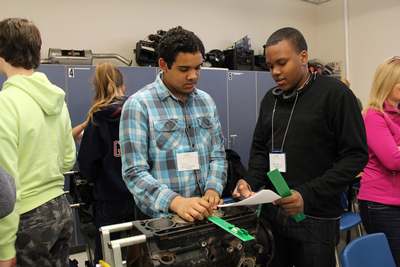High School Students Make Connections to College Life
They may only be midway through their Grade 9 year, but for
a group of 60 DSBN high school students it’s never too early to think about the
future.
The students, from Laura Secord, Stamford Collegiate and
Welland Centennial, recently spent a day at Niagara College’s Welland Campus to
see first-hand how the work they’re doing in class will prepare them for the
rigors of college life.
“Students had the opportunity to see three different
programs at the College; automotive, culinary and pharmacy,” said Fred Louws,
DSBN Student Achievement Leader.
Louws said the purpose of the visit was to show the students
how the Grade 9 math curriculum ties into programs offered at the postsecondary
level.
“Math is more than what you do in math class,” added Louws.
“It can be applied to most aspects of everyday life, everything from managing
personal finances to determining the proper measurements for cooking and home improvements.
Math is also an essential tool for the workplace. By visiting Niagara College,
our students were able to see concrete examples of how important math is to
their future.”
Those considering a career in auto mechanics were given an
opportunity to get up close and personal with an engine block in the College’s
automotive classroom.
Students were tasked with calculating the piston
displacement of the engine, which is an important factor in determining the
overall horsepower of the car. Armed with their rulers, students diligently
measured the cylinders and plugged that information into a variety of different
formulas to determine the volume of the cylinders and ultimately, the displacement.
In the culinary exercise, students had to build and cost out
a simple dish that could be served in a restaurant. If an establishment does a
poor job of calculating its costs, profitability will suffer. The students taking on this challenge worked
with fractions, percentages, measurements and conversions.
When working with medication, giving patients the proper
dosage can literally be a matter of life and death. Students learned about what
a pharmacy technician does and how to read and fill prescriptions. They had to
use their knowledge on ratios, proportions and conversions to determine the
appropriate dosage for fictional patients.
“It was really interesting to see how you can use math in
real life situations,” said one student. “It definitely motivates me to learn
more.”
